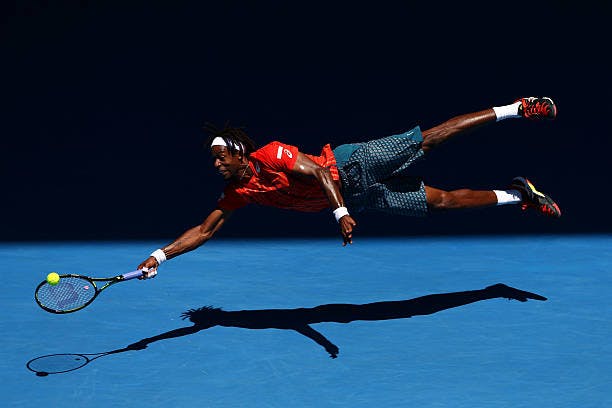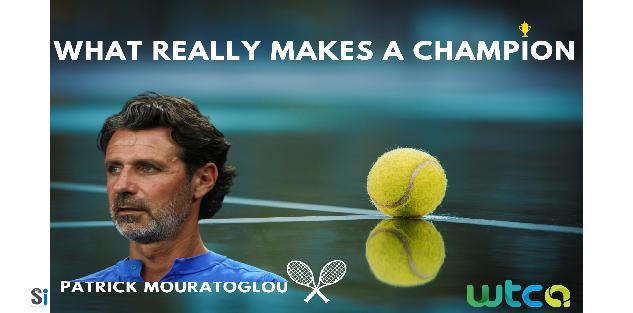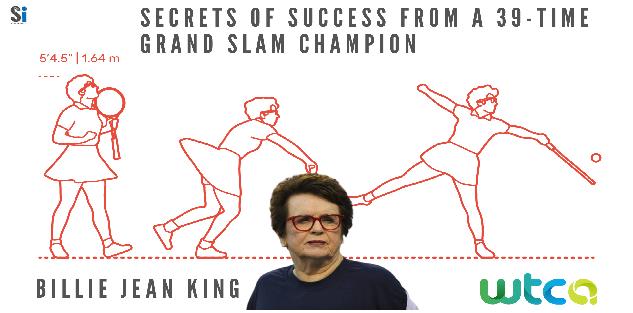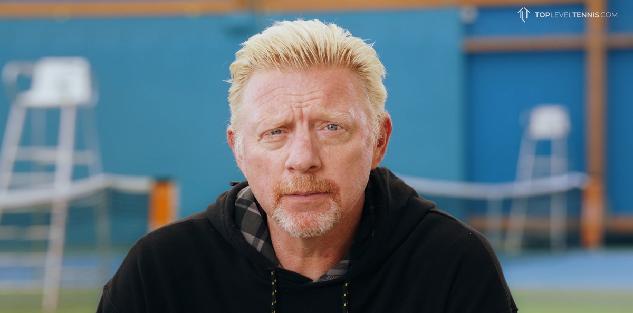Featured courses
- Four Tips to Turn Your Tennis Forehand Into a Weapon by Grant Young
- Tennis Legend Billie Jean King’s 4 Responsibilities as a Player by Grant Young
- Two Top Priorities For Success in Doubles Tennis by Grant Young
- Three of Tennis Whiz Lisa Dodson’s Tips to Improve Serves by Grant Young
- Three Elite Tennis Ball Machine Drills by Grant Young
- Three Keys For Correcting Tennis Serving Mechanics by Grant Young
- Five Tactical Tips to Win More Tennis Matches by Grant Young
- 4 Lessons Patrick Mouratoglou Learned From Coaching Serena Williams by Grant Young
- Four Effective Backhand Tennis Drills by Grant Young
- Two of Legendary Tennis Coach Paul Annacone’s Crucial Player Development Tips by Grant Young
- A Step-By-Step Guide To Mastering The Serve by Krsto Arsenijevic
- How to Dominate the Clay Court in Tennis by Krsto Arsenijevic
- 10 Essential Tennis Drills Every Coach Should Know by Brandon Ogle
- 8 Pre-Game Exercises to Prime Your Tennis Team for Competition by Neil Brown
- 7 Proven Tips To Develop Your Net Game in Tennis by Krsto Arsenijevic
- 10 Essential Tennis Drills Every Coach Should Know by Krsto Arsenijevic
- Developing Players - Two-handed backhand by Ramon Osa
- 6 Simple Warm-up Exercises For Tennis Players by Krsto Arsenijevic
- How to Beat a Serve-and-Volley Player by Krsto Arsenijevic
- How To Build Your Kinetic Chain Like Djokovic by Aiden Lefebvre
- How to neutralize a lefty in Tennis by Aiden Lefebvre
- 5 Tips To Improve Your Tennis Game Today by Krsto Arsenijevic
- Everything You Need to Know Before Buying New Tennis Shoes by Brandon Ogle
- Amp up your tennis practice with situational play by Neil Brown
- Tennis Equipment List by Brandon Ogle
- How to Master The One-handed Backhand in Tennis by Krsto Arsenijevic
- Modern High School Tennis Coaching Obstacles by Neil Brown
- Increase Your Tennis Fitness Level With 3 Easy Drills by Krsto Arsenijevic
- How to Successfully Hit a Two-Handed Backhand by Brandon Ogle
- How to Become a Grass Court Specialist in Tennis by Brandon Ogle
- How to Dominate the Hard-Court like Serena Williams by Brandon Ogle
- Hit a Drop Shot to Keep Your Opponent Off-Balance by Brandon Ogle
- New Tennis Injury Findings Linked to Neutral & Closed Stances by Oscar Wegner
- CHATTING WITH TENNIS PRO BRUCE CONNORS by Brandon
- How to Become a Mentally Strong Tennis Player by Brandon Ogle
- How to Win the Game of Angles by Hitting Cross-Court Shots by Eric Mahnke

Amp up your tennis practice with situational play
- By Neil Brown
On any youth sports team, practice is by far the most important element of a program. How can that be? Aren’t the actual games more important? Well, hear me out! Time spent at practice makes the difference between a merely mediocre collection of individuals and a truly successful team. Players and coaches spend more time at practice than in competition – so that’s when a team develops its identity and character.
The organization of practice and the choice of activities is the responsibility of the head coach, so it’s crucial that a coach create practices that are both educational and fun. Players should look forward to practice, from the top player down to the last substitute! Keep everyone involved so they are prepared to play when called upon. There is nothing worse than having players who need to be “dragged” out to the practice field and who can’t wait for practice to be over.
A well-organized practice begins with a dynamic stretch to loosen up muscles and anaerobic conditioning to develop speed and quickness. I am a firm believer that most if not all aerobic conditioning be done in the off-season, unless of course you coach cross country or distance running. Once conditioning is completed a sound practice plan will work on a progression, starting with individual skills and then building up to scrimmaging and cross training. Cross training is a great way to condition players and develop skills by introducing some other sport or game for the kids to play.
With my lacrosse team I was a big fan of playing water polo, basketball, team handball, and even capturing the flag.
Perhaps one of the most important changes I have seen over the years is the use of game-oriented activities and drills rather than the use of drills based on repetition; these repetitive drills are all too often disconnected from what players do while in competition. There is of course something to be said for being able to hit 10 consecutive cross court forehands or backhands into a small box drawn on the baseline, but it is important to limit the time spent on such drills or risk building too much monotony into the session.
It is also important that coaches embrace the idea of “empowering” players during practice. If your goal is to develop players who have a high IQ in their sport and can think on their own and “coach” themselves, then coaches can learn to feel comfortable giving players an activity or goal and sending them to another part of the courts or field while you work with other players. You needn’t constantly hover over your players -- sometimes you need to let them do their own thing.
By far my favorite part of practice is the time I devote to situational play. This can be done with any youth sport. In tennis, situational play should key in on what would be critical moments of a contest. Tell your players, for example: “You are down a set and down a break, and your opponent is serving to add out.” Then play the point. Now one big difference between tennis, and, for example, lacrosse, is that lacrosse has a time element I can add into a situation. Putting pressure on the players is much easier; in tennis this situation might not feel different than any other point, so somehow the coach needs to raise the stakes and apply some pressure. Now I’m not a big fan of negative reinforcement, so rather than punish the loser of the point, I would offer some sort of reward, even if the reward is letting the winner have the opponent “do” something, within reason. A good option is to move everyone to one court to take turns, with the other players acting as vocal spectators for either player or doubles team.
There is no shortage of critical moments in a typical tennis match, whether it is a critical game, a critical point, or a critical shot. Have your players replay the situation several times so they learn what works best. Putting players in these situational moments helps build confidence and can be a lot of fun. I strongly encourage that tennis coaches work this activity into their practices on a regular basis. The dividends, especially when the situation arises in a real match, can be substantial.
A well planned practice built on learning, conditioning, and fun, can be the difference between winning and losing, especially when facing an opponent of equal ability. These practices build passion and desire, and sometimes that is really what matters most.



